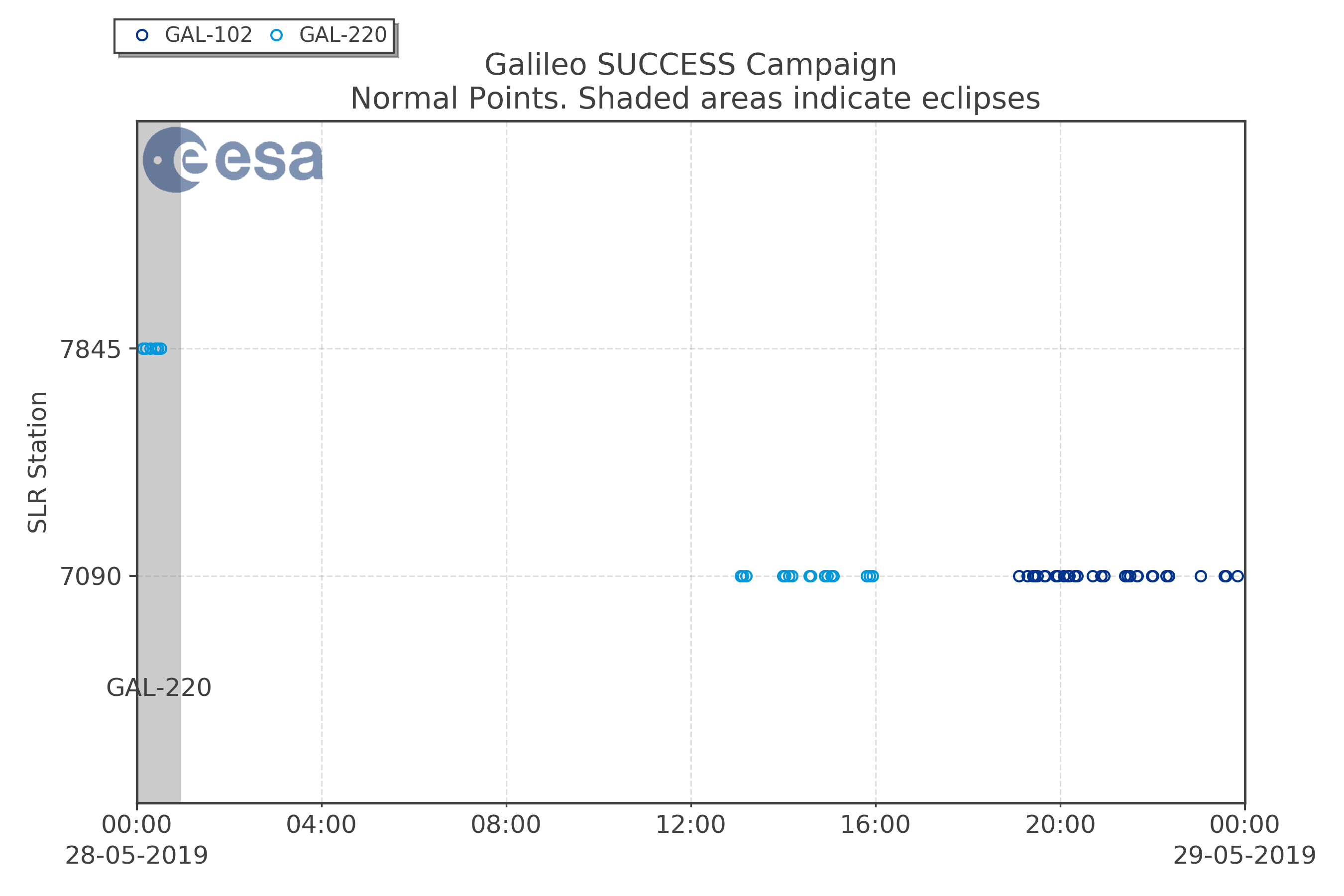Introduction to campaign
The usage of Satellite Laser Ranging measurements for GNSS Precise Orbit Determination and GNSS orbit analysis is gaining more and more attention. At the same time the number of GNSS satellites equipped with Laser Reflectors is increasing significantly. This development, against the background of the station tracking capabilities raises the question of how to optimally track GNSS satellites. In the past years, several campaigns have been initiated at the ILRS level with the goal to intensively track selected GNSS satellites and to answer this question. All campaigns significantly increased the tracking. But, the intense tracking of long orbit arcs, required for an in-depth analysis, was not the objective of the previous campaigns.
Within the ESA Alcantara initiative, "Feasibility of Operational use of Satellite Laser Ranging observations for GNSS Orbit Determination and Time Synchronisation and GNSS Science", the idea came up to start a dedicated Satellite Laser Ranging campaign within EUROLAS and to observe a limited number of Galileo satellites in a coordinated way. The goal of this campaign is to get a very dense tracking of these satellites and therewith to be able to perform in-depth analyses on the optimal SLR tracking, processing and on potential station specific biases and characteristics.
ESA will support this campaign with dedicated orbit analysis and feedback presented on this page throughout the campaign. The final results, together with the results from previous "LAser Ranging to GNSS s/c Experiment Expanded SLR Tracking of GNSS Satellites" (LARGE) campaigns will be presented at the technical ILRS workshop 2019. Any feedback to the ongoing campaign and corresponding analysis is welcome.
The campaign is coordinated within EUROLAS . Support from other ILRS stations is welcome and beneficial for the campaign.
The knowledge gained within this campaign might be used for a second coordinated campaign announced within whole ILRS in September.
ESA Evaluation
ESA has a strong interest in SLR for GNSS, particularly Galileo. We will analysis both the Full-Rate and Normal-Point data observed in this campaign. Our goal is to elaborate the ideal SLR observations strategy to aid our POD and Validation activities, as well providing feedback to the stations on the optimal way to range Galileo satellites.
Contacts:
Campaign Planning and Coordination
-
Michael Steindorfer (michael.steindorfer@oeaw.ac.at)
-
Francisco Gonzalez (francisco.gonzalez@esa.int)
POD and data analysis
-
Volker Mayer (volker.mayer@esa.int)
-
Erik Schoenemann (erik.schoenemann@esa.int)
-
Tim Springer (tim.springer@esa.int)
Residual analysis
First uncommented residual plots.
|
|
|
Number of Normal points
The plots below show the first step of our analysis: Daily plots of all NPT observed for GSAT0102 and GSAT0220. The plots are generated with two days delay and updated after five days. Eclipse phases are indicated by grey shaded areas. A first detailed report is expected early July 2019.
|
DOY 132 |
133
|
|
134 |
135 |
|
136 |
137 |
|
138 |
|
|
139 |
140 |
|
141 |
142 |
|
143 |
144 |
|
145 |
|
|
146 |
147 |
|
148 |
149 |
|
150 |
151 |
|
152 |
|
|
153 |
|
























